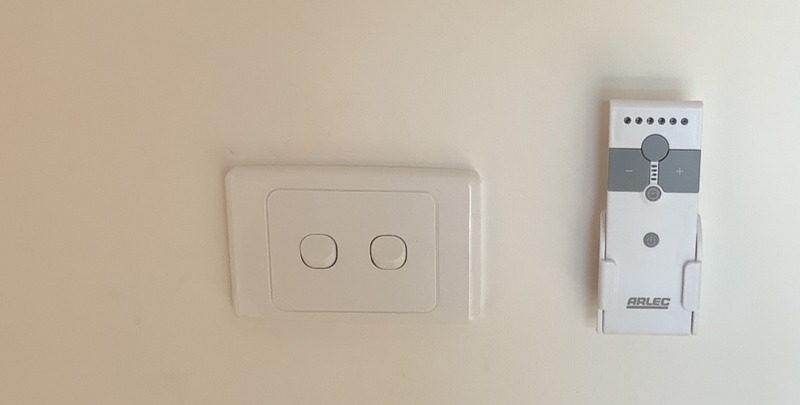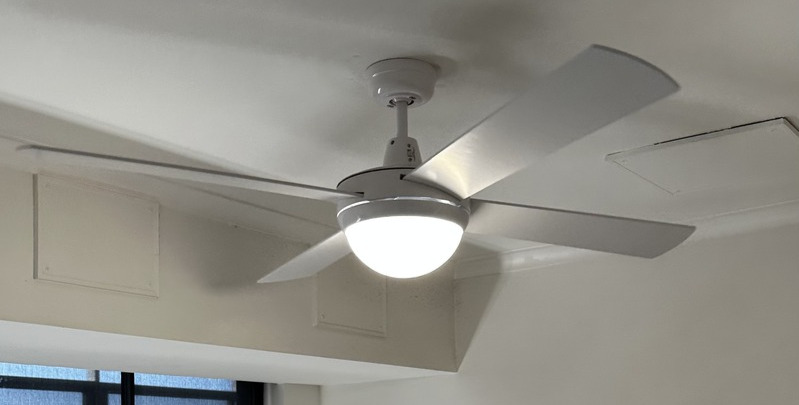Helpful Tips to Get the Most from Your Ceiling Fan

When it comes to enhancing the comfort and aesthetics of your home, installing a ceiling fan alongside an air conditioner can make a significant difference.
It provides a cool breeze on hot summer days, helping to circulate air throughout the room and reduce your reliance on air conditioning.
However, before embarking on a new ceiling fan installation project, it’s crucial to be aware of common mistakes that can hinder the seamless operation of your fan. This comprehensive guide provides pro tips for a successful and hassle-free ceiling fan installation experience.
1. Plan and Prepare
Proper planning and preparation are essential for a successful and seamless experience when installing ceiling fans.
Selecting the Right Ceiling Fans:
Before diving into the installation process, take the time to choose a ceiling fan that suits your specific needs and matches your home decor. Consider factors such as:
- The size of the room where the fan will be installed
- The ceiling height
- The overall style and theme of the room
- The features you desire in a fan, such as multiple speed settings, a remote control, or built-in lighting
Assessing the Ceiling Fans Size and Style:
One of the key aspects of planning is determining the appropriate size of the ceiling fan for the room. The fan’s blades should be proportional to the room’s dimensions to ensure effective air circulation. Consider consulting a sizing guide or seeking professional advice to determine the ideal fan size for your space.
In addition to size, think about the style and design of the fan. Choose a fan that complements the existing decor and blends seamlessly with the room’s overall aesthetic. Whether you prefer a sleek and modern design or a more traditional look, countless options are available to suit your taste.
2. Hire a Professional Electrician
Hiring a professional electrician to install a ceiling fan offers numerous benefits and ensures a safe and efficient process. In Australia if the ceiling fan requires a wall switch it must be installed by a professional electrician.
Expertise and Knowledge
Professional electricians have extensive training and expertise in handling electrical systems. They deeply understand electrical connections, wiring configurations, and safety protocols. Their knowledge enables them to navigate complex installations with precision and efficiency. By hiring an electrician, you can tap into their expertise and ensure your ceiling fan is installed correctly.
Safety First
Electrical work can be hazardous, especially if you’re not familiar with the intricacies of electrical systems. Experts prioritise electrical safety above all else. They are trained to identify potential risks and take the necessary precautions to protect themselves, their property, and their loved ones. They have the proper tools and equipment to handle electrical connections safely, minimising the risk of accidents or electrical hazards.

Compliance with Regulations
Electrical installations are subject to local building codes and regulations. Hiring a professional electrician ensures that your ceiling fan installation’s existing and compliant wiring meets these standards. Electricians stay updated with the latest codes and requirements, ensuring your installation is compliant. Electrical compliance ensures safety and avoids future issues with inspections or insurance claims.
Efficient and Effective Installation
Professional electricians have experience in installing ceiling fans and other electrical fixtures. They understand the best practices, techniques, and tools required for a smooth installation. They can efficiently handle wiring connections, fan mounting, internal roof support, electrical cabling supplied, and proper operation testing. With their expertise, electricians can complete the installation promptly while maintaining quality workmanship.
Troubleshooting and Problem-solving
Electrical installations can sometimes encounter unexpected challenges or issues. Professional electricians are skilled troubleshooters who can quickly identify and resolve problems that may arise during the installation. They have the knowledge and resources to overcome hurdles and ensure that your ceiling fan power fixture functions optimally.
Warranty and Insurance
Hiring a professional electrician often comes with the added benefit of warranty coverage. If issues arise after the first installation date, you can rely on the electrician’s warranty to address them. Additionally, professional electricians carry liability insurance, providing you with peace of mind in case of any damage or accidents during the installation process.
While DIY enthusiasts may be tempted to tackle a ceiling fan installation themselves, the advantages of hiring a professional electrician outweigh the risks.
3. Understand Additional Costs and Services
Understanding the potential additional costs and services associated with your ceiling fan installation is essential for effective planning and budgeting.
Assessing Project-Specific Requirements
Each ceiling fan installation project may have unique requirements based on location, existing wiring, and desired features. It’s important to assess these requirements to determine whether additional services or modifications are necessary. For example, if the existing light fixture and wiring are incompatible with the fan’s specifications, extra wiring may be needed to ensure proper functionality.
Extra Wiring and Modifications
Additional wiring or modifications may be required depending on your ceiling fan’s features and location. This could involve extending electrical cabling from the power source to the installation site or rerouting existing wiring to accommodate the fan. Discuss these requirements with the electrician, who can guide the extent of the necessary electrical work and associated costs.
Wall Switch or Remote Control Installation
If you wish to have a wall switch or remote control for your ceiling fan, it’s important to consider the associated installation costs. The electrician can provide information on the available options, the compatibility of your chosen fan with these controls, what installation requires, and the installation cost.

Mounting Point Modifications
In some cases, the existing mounting point may need adjustments or modifications to ensure proper fan installation. This could involve reinforcing the ceiling structure or relocating the mounting point to achieve optimal performance and stability. Discuss the installation request and any necessary modifications with the electrician and inquire about the associated costs.
Clear Understanding of Costs
The installation price covers all costs related to the additional services required for your ceiling fan installation. This includes labour charges, materials, and any other applicable fees. A transparent understanding of the upfront ceiling fan cost installation allows you to plan your budget accordingly and avoid any unexpected financial surprises.
By thoroughly discussing the specific requirements of having your ceiling fan installed and clearly understanding the additional costs and services involved with the new installation, you can make informed decisions and effectively plan for your project.
Time to Wrap Up Your Ceiling Fan Installation Journey with Success!
A seamless ceiling fan installation enhances your home’s comfort and adds a touch of style to your living space. You can ensure a successful installation process by avoiding common mistakes and following these pro tips.
Plan and prepare adequately, evaluate your existing wiring, consider hiring a professional electrician, factor in additional costs, and choose a reliable installation service. With proper attention to detail and expert guidance, you’ll soon enjoy the benefits of a perfectly installed ceiling fan. Stay cool and enjoy the refreshing breeze all year round.
Please note: This information is provided for advice purposes only. Regulations differ from state to state, so please consult your local authorities or an industry professional before proceeding with any work. See our Terms & Conditions here.